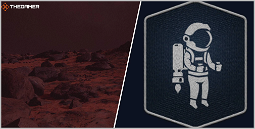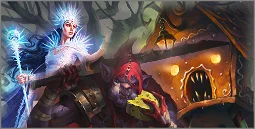Want to know how to fill out a D&D character sheet? You may be rolling for some stats, but you’ll need to know how to document all of your stats and backgrounds, as well as skills and tools, in this simple requirement for bigger adventures down the road.
A simple requirement for sure – completion of a character sheet is a requirement for nearly every single Dungeons & Dragons game, – but it’s one that can put newcomers off before they’ve even got the dice out. Don’t let the prospect of having to re-learn one of the biggest and most popular PC games of all time hold you back, though, as with all skills, your familiarity with the process will increase with time and experience in the game.
If you’ve just started playing one of the biggest tabletop roleplaying games, or you’re in need of a refresher for your second or hundredth character, you’ll need to know how to fill out a Dnd character sheet. From essentials like your health points, armour class, and languages down to the stats and skills you’ll be using to play – and roleplay – your character, the character sheet is your local hub of information. But what numbers go where, and how are they determined?
Dnd 5e Character Sheet Basics
We’ve included where you can download the Dungeons & Dragons character sheet for free in our step-by-step guide, but to summarise: you’ll need to fill in your character’s information on lines 1-6, your ability scores in line 7, and then your traits, background, and more in lines 12 onwards. Before you can do that, however, you’ll need to know what each line includes and how to fill it out.
Here’s how to fill out a D&D character sheet:
If this is your first time filling out a character sheet, the easiest section to fill out, albeit one of the hardest decisions to make for some. If you’re making multiple characters and want to swap them out halfway through, or you want to remember which stats go with which race, you can fill these out before choosing to avoid making a mistake.
While there are further nuances and options to your choice, you really should really focus on creating a character you want to play, despite any associated stats. Your priority is to have fun. Your choice of species can determine how you look, what abilities you’ll have, what languages you’ll speak, and more – but none of that is so big to be considered a perk, so you can go through the list of available species and pick whichever fits your fancy. We recommend choosing from either the Player’s Handbook if you’re just starting out or Mordenkainen Presents: Monsters of the Multiverse, an amalgamation of species choices from multiple sourcebooks in fifth edition D&D.
Once you’ve chosen, write the name of the species on the race line (race, remember, as Dungeons & Dragons has swapped the term for species) and you’re ready for step two. You’ll notice the line says race, but we’ve referred to it as species above, and this is because with D&D One and beyond, Dungeons & Dragons have chosen to swap the term race with species instead, and as the material is updated, we are following that example.
Now is the time to fill in your ability scores. Most players will simply use the standard array, which will give you 16, 14, 13, 12, 10, 8. An alternative, and one that’s recommended as it helps you create more unique characters and avoid negative ability score modifiers, is to pick four ability scores that you build off, with your other three rolled by the table. Alternatively, you can swap out one or two of your rolls with something more game-friendly and unique. Your choice.
Once you’ve filled in your ability scores, you’ll return to your species options to add bonuses based on the species you’ve chosen or choose bonuses based on as shown in Monsters of the Multiverse. For example, if you choose a tiefling, you’ll get a +1 to intelligence and charisma, but if you choose a githyanki, you’ll get +1 intelligence, but –1 to charisma.
Choosing your class is the hardest decision. If you haven’t read through the available fifth edition classes in Dungeons & Dragons you may not know what strengths and weaknesses those classes have – and your first character probably won















